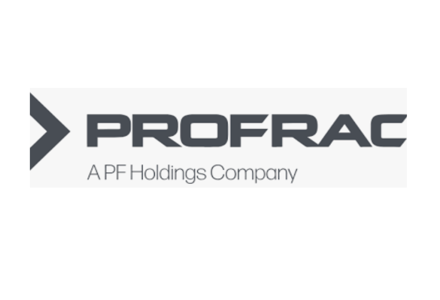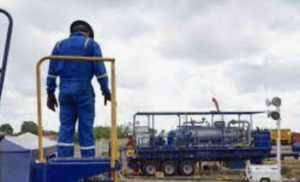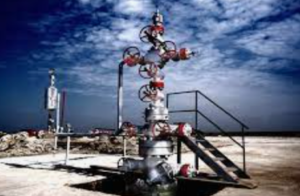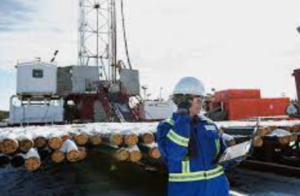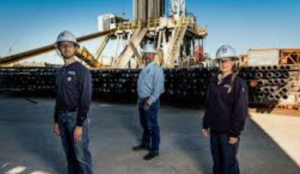The hydraulic fracturing industry is rapidly evolving, with companies like ProFrac Holding Corp. leading the way in developing efficient, sustainable, and advanced technologies. ProFrac’s latest updates reveal strategic innovations, particularly through SimulFrac technology, electric and dual-fuel fleets, and their broader approach to operations in the Permian Basin. Here’s a closer look at these advancements and what they mean for the future of hydraulic fracturing.

1. SimulFrac Technology: Doubling Efficiency, Reducing Costs
One of the standout innovations ProFrac has deployed is SimulFrac, a technique that allows operators to stimulate two wells simultaneously using a single fleet. This simultaneous fracturing, or “SimulFrac,” drastically improves efficiency by enabling more barrels per minute, more stages per day, and greater coverage of lateral feet. Here’s how SimulFrac is transforming the field:
- Enhanced Productivity: In a case study from the Midland Basin, ProFrac reported a 46% improvement in efficiency, allowing operators to complete nearly double the number of stages per day. This technique achieves productivity levels that set industry benchmarks, reaching 18 stages and over 4,000 lateral feet in a single day.
- Cost and Time Savings: By reducing the total time on-site by up to 12 days compared to traditional zipper fracturing methods, SimulFrac results in substantial cost savings. For operators facing high operational expenses and aiming to maximize time efficiency, this reduction is a game-changer.
- Lower Environmental Impact: SimulFrac’s accelerated process reduces fuel consumption and emissions, aligning with ProFrac’s sustainability goals and helping operators manage environmental impact.
As ProFrac’s innovative SimulFrac method gains traction, operators across North America will likely see this approach integrated into their own well completions strategies, making it a standard in efficient, eco-friendly operations.
2. The Role of Electric and Dual-Fuel Fleets (Tier 4/DGB): Cleaner and More Flexible Operations
As environmental concerns rise and regulatory pressures increase, ProFrac has been proactive in upgrading its fleets to include electric and dual-fuel capabilities. Approximately 72% of ProFrac’s active fleets can now operate using electric or natural gas power, with the dual-fuel Tier 4/DGB fleets allowing operators more flexibility in fuel sources. The dual-fuel setup enables the use of both diesel and natural gas, which offers a range of benefits:
- Reduced Emissions: Dual-fuel and electric fleets significantly lower carbon emissions compared to traditional diesel-only fleets, making them ideal for operators committed to minimizing their environmental footprint.
- Cost Efficiency: The use of natural gas in dual-fuel engines can reduce fuel costs, as natural gas is often less expensive than diesel. This financial benefit is particularly valuable in regions where natural gas is abundant, such as the Permian Basin.
- Improved Operational Flexibility: Electric and dual-fuel fleets can adapt to fluctuating fuel prices and availability, providing operators with options to optimize cost and environmental impact depending on market conditions.
With strong demand in the Permian Basin for these advanced fleets, ProFrac is well-positioned to provide cleaner and cost-effective solutions, meeting the energy sector’s evolving needs.
3. ProFrac’s Operations in the Permian Basin: Strategic Positioning and Sustainable Growth
The Permian Basin is one of North America’s most prolific regions for oil and gas production, and ProFrac has focused much of its operational efforts here. While current market conditions have led to a temporary softness in pricing and activity, the company’s integrated, technology-focused model helps it stay competitive and resilient.
- Integrated Services: ProFrac’s approach of combining hydraulic fracturing, proppant production, and manufacturing allows it to provide a comprehensive service offering to Permian operators. This integrated model is a key differentiator, enabling seamless, efficient operations.
- Scaling Up to Meet Demand: Despite the temporary dip in activity, ProFrac anticipates a recovery in 2025. The demand for sustainable technologies like electric and dual-fuel fleets is increasing, and ProFrac is ready to meet these demands, positioning itself for long-term growth in the Permian.
- Supporting Regional Sustainability: ProFrac’s dedication to eco-friendly technologies aligns with the broader industry push toward reducing emissions, particularly important in regions like the Permian, where environmental regulations are evolving.
As ProFrac enhances its capabilities in the Permian, its operations will continue to play a key role in driving sustainable and profitable energy production in the area.
4. Looking Ahead: ProFrac’s Vision for 2025 and Beyond
ProFrac’s forward-looking strategy reflects the company’s commitment to innovation, sustainability, and responsiveness to market conditions. While a slight decline in demand is expected in the immediate term, the company’s long-term vision is optimistic:
- Increased Demand for Eco-Friendly Fleets: With 72% of its active fleets already equipped with electric and dual-fuel capabilities, ProFrac is well-prepared to support the industry’s shift toward lower-emission technologies.
- Strengthened Integrated Services Model: ProFrac’s ability to provide integrated services and full value-chain solutions positions it as a reliable partner for operators aiming to streamline and improve the sustainability of their operations.
- Growth in Proppant Production: ProFrac’s proppant production, powered by acquisitions like Signal Peak Silica, ensures it can meet the demand for in-basin sand, especially crucial for Permian operators who need accessible, cost-effective proppant sources.
As the energy sector moves into 2025, ProFrac’s advanced technology and commitment to efficiency and sustainability will likely see it emerge as a key player in transforming hydraulic fracturing. By aligning itself with market demands for eco-friendly and cost-effective solutions, ProFrac not only secures a competitive advantage but also contributes to a more sustainable future for oil and gas production.
ProFrac’s initiatives are a testament to how the oil and gas industry can adapt to modern demands, combining technological advancements like SimulFrac with eco-friendly fleet upgrades to lead in sustainable practices. As they continue to expand and refine their operations, ProFrac’s role in reshaping hydraulic fracturing, especially in the critical Permian Basin, sets a strong example for the industry.

